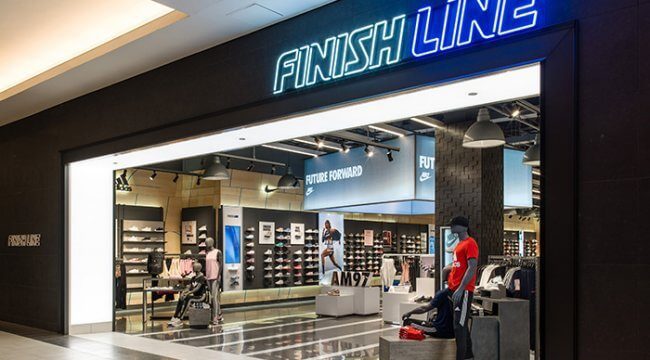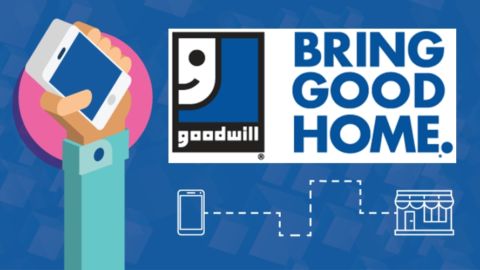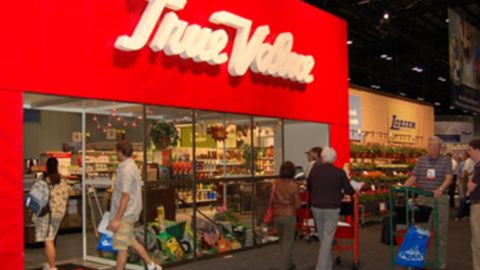With 950 locations across the U.S., an e-Commerce site and a partnership with Macy’s, Finish Line has plenty of ground to cover in delivering the right items to the right shoppers at the right time. To streamline its inventory and budgeting across one single platform, Finish Line implemented the Merchandise Planning Solution from TXT Retail, an Aptos company.
With TXT Retail Merchandise Planning, Finish Line has:
- Centralized its merchandise planning capabilities under one platform;
- Set global sales/margin targets for all products, brands and channels they serve, while harmonizing buying decisions to expected demand;
- Created budgets for future merchandise planning cycles; and
- Simulated and made course corrections to keep a firm handle on margin and inventory investment targets.
Previously, Finish Line would begin its merchandise planning process 10 months prior to receiving any products, according to Brad Eckhart, Senior VP of Planning and Allocation.
Advertisement
“We’d begin with high level sales and margin targets by banner — referring to Finish Line as a banner and Finish Line in Macy’s as a second banner — and then channel plans within those for both stores and web,” Eckhart said in an interview with Retail TouchPoints. “Then we cascade that down to the product and vendor level, where we apply additional inventory metrics such as churn, receive and cost of products sold. Simultaneously, we created store sales plans, which take into account our real estate strategies and ultimately, we reconcile those product, vendor and store plans by month.”
But even with this system in place, the Finish Line team recognized the need for a centralized planning system that would help transition the company away from “a spreadsheet environment.” One of the goals was to spend less time pulling data, and more time analyzing and forecasting. The TXT platform fulfilled Finish Line’s immediate needs related to merchandising and financial planning and is presently helping the company deliver on its longer-term assortment planning objectives.
“It sounds very basic, but the automation of actualized data on the more than 100 planning metrics that we have in TXT was a key feature for us,” Eckhart said. “Having that data actualized on a weekly basis in an automated fashion, and available to the users first thing Monday morning, was something we never had in a planning system.”
Finish Line Divides Inventory With Macy’s Business, But Unifies Assortment Across Stores, Online
In the brick-and-mortar world, Finish Line runs approximately 950 branded locations in U.S. malls and shops inside Macy’s department stores. Digital touch points include finishline.com, the Finish Line mobile app and a presence on macys.com. Eckhart noted that Finish Line and Finish Line within Macy’s are two distinct businesses, each with its own customer and vendor bases. This separation requires Finish Line to divide its inventory into separate assortments for the core brand stores and the Macy’s stores. However, each business’ inventory is unified across its physical stores and e-Commerce sites.
“Finish Line and Macy’s both have very established online businesses and we leverage our inventory assortments across both channels — stores and web — within each of those banners,” Eckhart said. “While we view [our various channels] as a competitive advantage, it does complicate the process of inventory management, allocation and replenishment. With more than 500 Finish Line core stores and almost 400 Finish Line Macy’s shops, identifying store characteristics to effectively enable us to cluster stores based on customer demand is a challenge. But [the process of] doing so would ultimately lead us to more advanced assortment planning and more localized assortments to meet our customers’ expectations.”
On To Phase Two: Individual Store Planning, Grading And Clustering
Finish Line completed the first phase of its deployment in partnership with Columbus Consulting in October 2017. This included all aspects of merchandise financial planning, including strategic planning, preseason financial planning, in-season forecasting and open-to-buy management.
During the next project phase, Finish Line is focusing on store planning, grading and clustering, key item planning and assortment strategy, to create customer-focused assortments that meet localized demand. Finish Line is leveraging the TXT AgileFit deployment methodology, which is designed to allow the project to be delivered on extremely tight timelines.
“Those modules, combined with the output of the vendor and product plan as part of phase one of our implementation, will ultimately result in enhanced preparation for our go-to-market sessions with our key brand partners,” Eckhart said. “All of this lays the groundwork for implementing our long-term goal of assortment planning.”
As of April 2018, the second phase has continued on schedule, with Finish Line in the user acceptance testing phase, conducting change management sessions with the buying and planning teams.
“Our plan is for a technical go-live by summer, with a phased deployment and training through the fall of this year,” said Eckhart.















